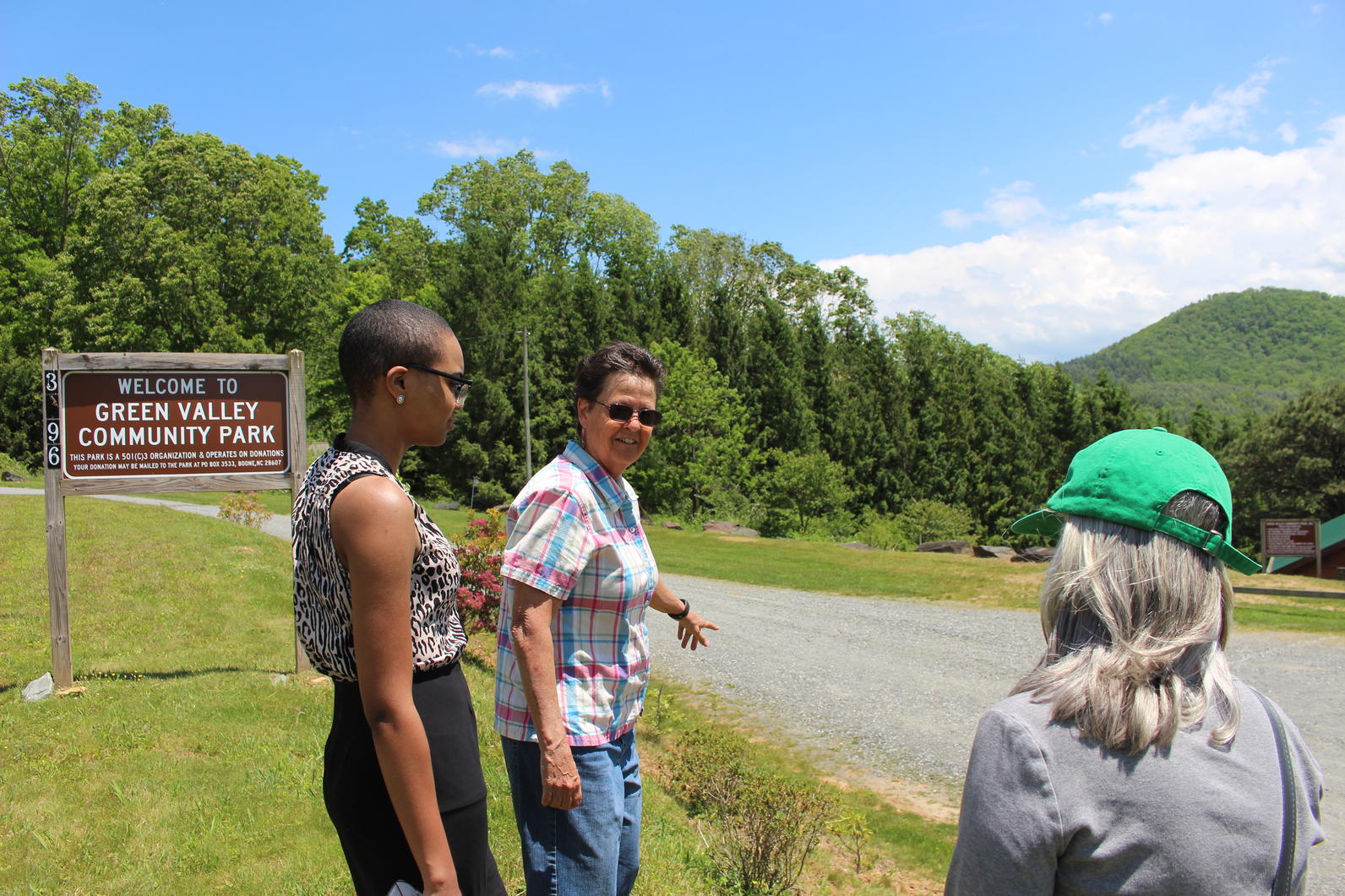A transformation is taking place along the south fork of the New River outside of Boone, where native shrubs are showing their first fruit and new trees will soon line the river bank at Green Valley Community Park. The 19-acre reserve has been an oasis for people looking to access the river or play on the soccer fields, but the new plant life will soon make the park a welcoming place for birds as well.
The new vegetation, all of it indigenous to the North Carolina mountains, is sprouting at the park with a helping hand from High Country Audubon. The Boone-based Audubon chapter has been busy since last summer planting a native garden on a dusty hillside, with the goal of creating more habitat for birds.
On a recent tour, High Country Audubon Board President Debbie Shetterly pointed out the Mountain Laurel, Arrowwood Viburnum and Spicebush already poking out of the garden, just a few of the 57 native plant species now in the ground. “They explode about the third year after planting,” Shetterly said. “You have to be patient.”

While the garden is in its first full year of growth, Shetterly is already beginning to see the fruits of her work. Across the hillside, clumps of greenish blueberries have formed on the tips of young bushes. Blueberries are among the few plants that have all the things birds need: Food, shelter, nest sites, and insects.
Green Valley Community Park was originally formed nearly two decades ago, funded by local contributions and money from North Carolina’s Clean Water Management Trust Fund. The park is green, but the soccer fields and surrounding Christmas tree farms don’t provide high-quality bird habitat.
High Country Audubon’s plan to transform the park began with a bird conservation plan drafted by Audubon North Carolina Director of Conservation Curtis Smalling. Over the years, the park's board has implemented many of the recommendations from Smalling's plan, including adjusting the mowing schedule of the property to ensure vegetation growth that creates bird habitat. The garden is another piece of that long-term vision for the park.
Downhill next to the river, Shetterly and her chapter members have plans in the works to create a new strip of forest along the river bank. The chapter will plant chest-high saplings that will one day create a new tree canopy. The species will all be fast-growing and well-suited for life next to the water. The list includes River Birch, Yellow Buckeye, Black Cherry, Sycamore, and Tulip Poplar.
The goal is to create a multi-layered forest habitat for migrating songbirds, enticing Yellow-throated Vireos, Scarlet Tanagers, Baltimore Orioles, and other songbirds to nest in the park, Shetterly says. “Birds need layers,” she says. “They don’t do well with just shrubs or just trees.”
Uphill from the river, a narrow creek runs down a ditch next to an overgrown field. But a restoration project led by the New River Conservancy, in partnership with High Country Audubon, could lead to the restoration of wetlands in the field, allowing the creek to run its natural course. Combined, the work to restore native plants and habitats to Green Valley Community Park will make the park a welcoming place for birds and people. You can do the same thing with your yard. Check out Audubon's list of 700 bird-friendly native plants for North Carolina.






